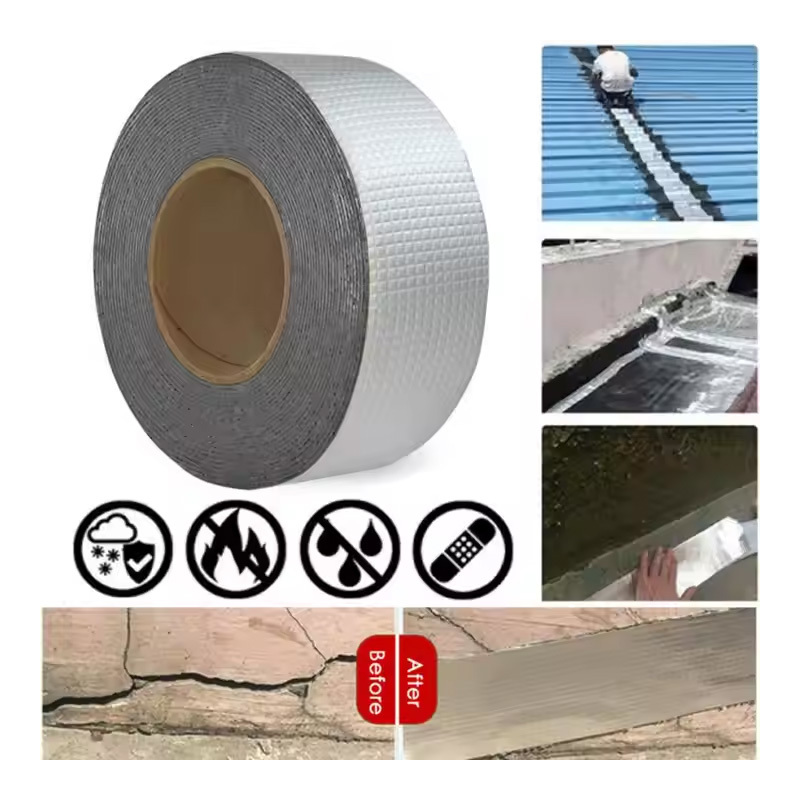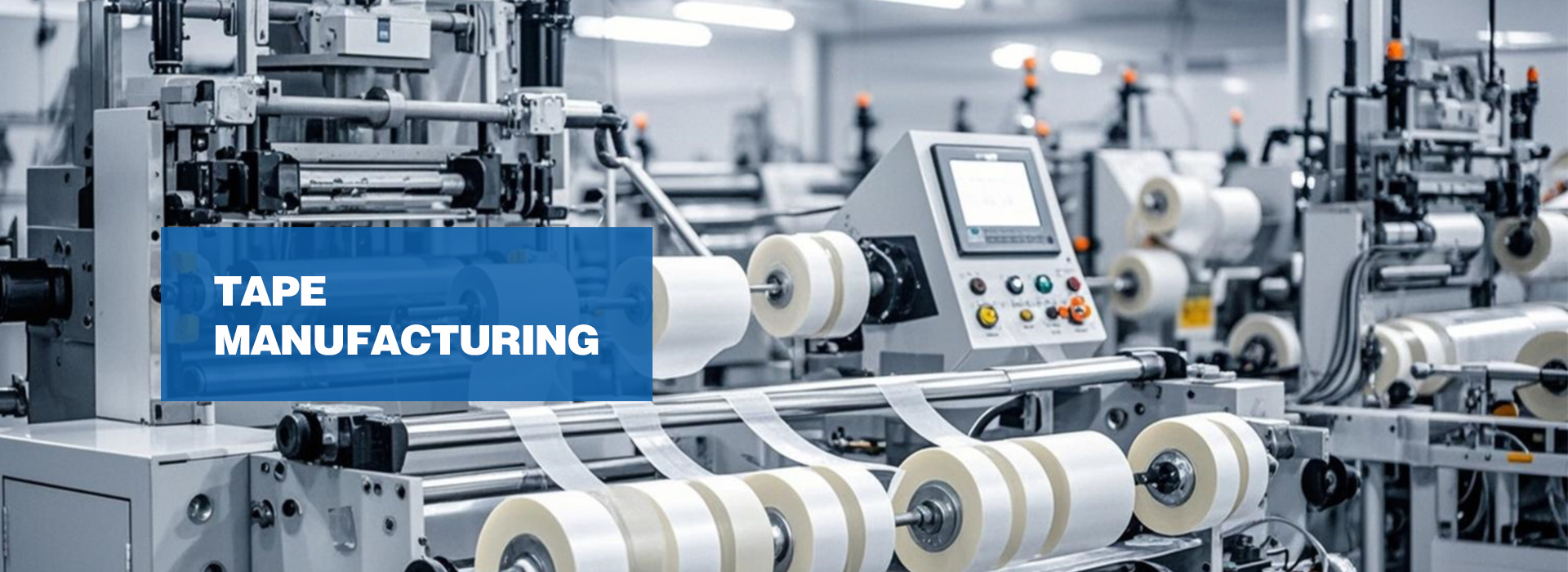Butyl Tape: A Technical Deep Dive
Butyl tape is a highly effective, non-curing, pressure-sensitive sealant made from an isobutylene polymer designed for applications that require a durable, flexible, and rainproof seal. Commonly used in roofing, construction, automotive, and solar panel installations, butyl tapes accommodate thermal expansion, structural movement, and mechanical vibration.

1. Composition and Properties
Core: Butyl rubber, typically 30-40% of the total tape mass, derived from petroleum
Properties: No skinning, stays tacky; flexible, UV-resistant when hidden; high adhesion; moisture-resistant
Additives: Fillers, antioxidants, UV inhibitors, plasticizers—proprietary ingredients that vary by manufacturer.
2. Proven Durability: Field Performance
A 35-year study covering 14 metal roofing sites in different climates found that butyl tapes used at seam overlaps showed no degradation in permeation resistance or adhesion, with an expected service life of more than 60 years.
When used properly, butyl tape can meet or even exceed the life of its sealing system.
3.Typical Applications
| Application Area | Use Case | Benefit |
|---|---|---|
| Metal Roofing | Standing‑seam roofs, flashing | Waterproof, slip-resistant seal across panels |
| Solar Mounting Brackets | Sealing bracket bases on roofs | Secondary water protection; UV protection when concealed |
| RV/Van Roof Fixtures | Roof vents, skylights | Resilient seal against movement; prevents screw-hole leaks |
| Construction & Tunnels | Concrete joints, prefabricated panels | Durable, elastic seal for structural shifts |
| Automotive & Machinery | Window assemblies, heavy equipment windows | Customized EVAs vs butyl tape ensure airtight, vibration-resistant seals |
4. Common Failure Modes and Causes
a) UV Exposure
Butyl tapes remain tacky, but the surface is under-cured. When exposed to direct sunlight, UV rays degrade the surface, causing loss of tack. Masking the edges of the tape or using it indoors prevents UV degradation.
b) Extreme Temperatures
While butyl tapes can withstand temperatures from -15°C to +45°C during installation, extreme heat can soften them, potentially causing flow or adhesive oozing. Cold temperatures can cause them to harden, reducing adhesion. Preconditioning to room temperature is essential.
c) Surface contamination and roughness
Oil, dirt or oxides can weaken adhesion. Surfaces must be prepared by wiping, degreasing and lightly sanding.
d) Mechanical stress and compression
Overtorquing fasteners can cause butyl tape to be compressed from the joint, reducing seal integrity. Thermally cycling structures require an elastomeric sealant to account for expansion.
e) Improper sealant mix
In RV applications, mixing butyl tape with silicone can lead to incompatibility: bubble formation, delamination or tearing.
f) Improper application
Users have reported leaks in roof vents due to insufficient compression of butyl tape or application to corrugations, resulting in an incomplete seal.
5. Installation and Best Practices
1. Surface Preparation
Remove grease and dust with a degreaser.
Sand lightly to promote mechanical bonding.
Allow to dry completely before applying tape.
2. Environmental Conditions
Ideal installation temperature is 50-80°F.
In hot climates, cool tape before application.
In cold climates, gently warm substrate and tape to increase flexibility.
3. Application Tips
Cut to exact length; peel straight off backing.
Apply constant pressure to avoid stretching.
Use a roller or palm to roll firmly across the entire width.
4. Compression Control
Fasteners should pass through butyl tape, not around it.
Use spacers or flange designs to prevent excessive compression.
5. UV Protection
Do not expose tape to direct sunlight—pat underneath flanges or panels.
Overhangs or covers protect exterior-applied tape.
6. Compatibility
Avoid pairing with silicone caulks unless tested.
Use recommended sealant systems
6. Field Case Studies
A) Metal Roof Leak Prevention
A Florida contractor used a double layer of butyl tape on the seams when installing a hurricane-proof standing seam roof. Post-hurricane inspections revealed no leaks, and both adhesion and seal integrity were verified.
B) Solar Mount Sealed for Durability
S-5! reports that factory-applied PV mount butyl tape is still intact after 32 years, retaining its elasticity and seal far superior to other systems.
C) RV Roof Vent Repair
A VanDweller replaced a leaky roof vent seal using thick butyl tape and Dicor sealant. The combination successfully sealed valleys and screw penetrations for more than three years.
D) RV Window Seal Failure
A Toyota RV had leaky windows due to deteriorating butyl seals—needing to be completely removed and replaced to prevent further damage to other interiors.
E) Corrugated Roof Screw Seals
During weekend build projects, users apply butyl tape under drip grooves and screw lines, then overlap with caulk and foam caps to prevent wind and rain infiltration.
7. Industry & Regulatory Background
European Union regulations (CPR) require the use of fire-resistant, low-smoke adhesives - demand for high-performance butyl tapes is rising.
North American Title 24 and IBC standards promote airtight seals to withstand hurricanes - driving the use of butyl rubber in window frames
OEMs (e.g. Ford, GM) use low-VOC butyl tape to bond interior panels, reducing VOC emissions in the cabin by 22%
8. Troubleshooting & Maintenance
Tape detachment: may be caused by surface contamination or improper compression - use degreaser and reapply with the correct fasteners.
Over-compression: causes seal to squeeze out and leak; use compression stops in flange design.
UV aging: Exposed tape will age - cover with metal flanges, trim or caulk.
Incompatible with caulk: Mixing sealants may result in failure - use a tested combination of products.
9. Summary: Why Butyl Tape Remains Essential
Durability: Durable in harsh environments, long-lasting performance.
Flexibility: Absorbs structural movement and thermal expansion.
Easy to use: No curing required; instant seal.
Low maintenance: Regular inspection and replacement (5-10 years), especially for concealed installations.
At Abendo, we manufacture high-performance butyl sealant tapes engineered for long-term sealing across industrial, automotive, and construction environments.
Explore our full product line at www.bztape.com or contact our engineering team for custom solutions tailored to your project needs.
Keyword:
Butyl Tape,Butyl Sealing Tape,Butyl Rubber Tape,Roof Sealant
RELATED NEWS


